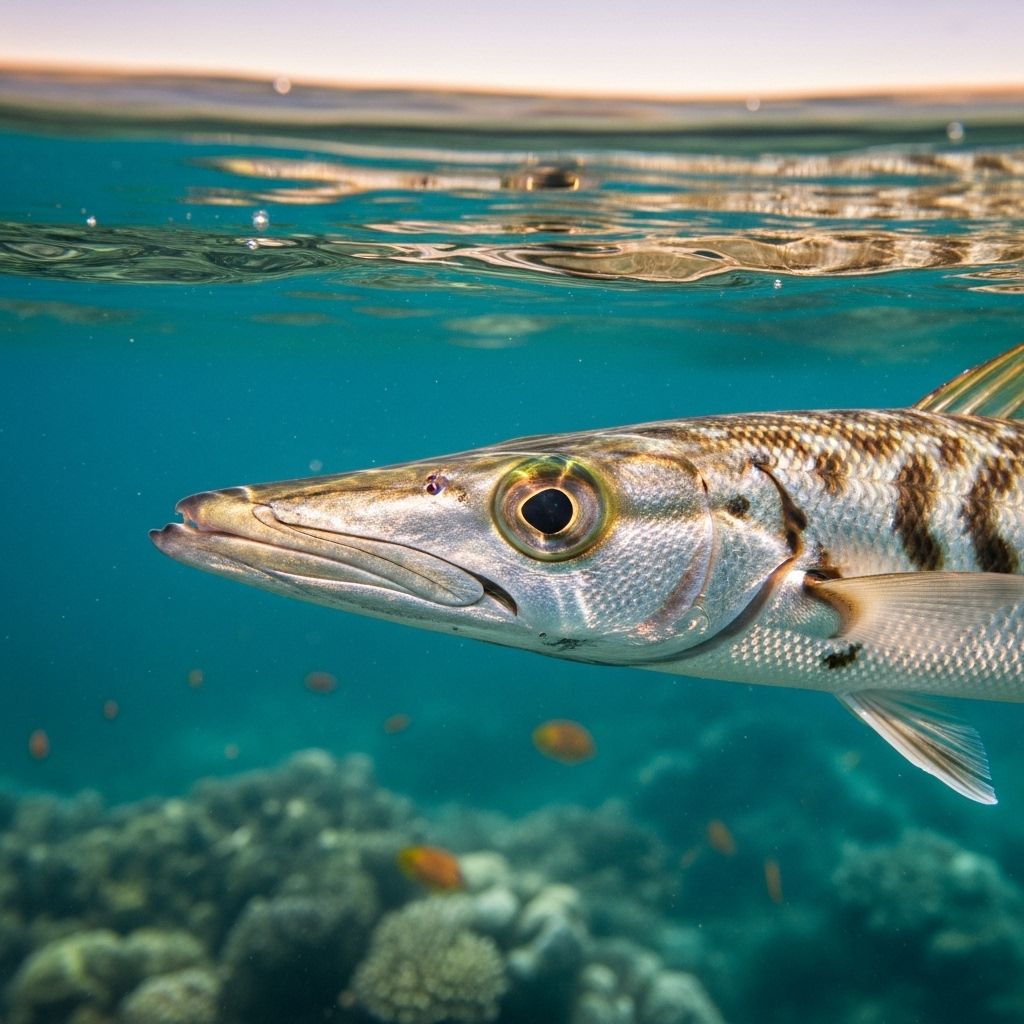Understanding Fish Poisoning: Symptoms, Types, Prevention, and Treatment
Learn about fish poisoning, including its symptoms, causes, prevention, treatment, and when to seek medical help.

Fish Poisoning: Symptoms, Types, Prevention, and Treatment
Fish and other seafoods are a popular part of many diets across the world. However, consuming certain types of fish or shellfish can sometimes lead to fish poisoning, a foodborne illness that occurs when people ingest toxins naturally present or produced by bacteria in aquatic environments. Being aware of the types of fish poisoning, the symptoms to watch for, prevention strategies, and treatment options is vital for public health and safety.
What Is Fish Poisoning?
Fish poisoning is a condition that occurs after the consumption of fish or seafood containing toxins. These toxins may come from bacteria that grow on improperly stored fish or from the fish’s own biological make-up in their natural environment. Unlike many other types of food poisoning, fish poisoning can’t be prevented by cooking, freezing, or washing, since the toxins are often heat- and cold-stable.
Main Types of Fish Poisoning
Although there are several distinct forms of fish poisoning, two of the most common types are:
- Ciguatera Fish Poisoning (CFP)
- Scombroid Fish Poisoning (Histamine Poisoning)
Other, less common, types include tetrodotoxin poisoning (pufferfish) and paralytic shellfish poisoning. This guide focuses primarily on ciguatera and scombroid poisoning, due to their prevalence and importance.
Causes of Fish Poisoning
Fish poisoning is usually caused by the consumption of fish contaminated with natural toxins or by bacteria that proliferate when fish and seafood are improperly stored or not cooked correctly. Here’s how the main types of poisoning occur:
- Ciguatera: Caused by eating tropical reef fish that have accumulated ciguatoxins from dinoflagellates (tiny marine organisms). Fish common to ciguatera poisoning include barracuda, grouper, snapper, and amberjack.
- Scombroid (Histamine Poisoning): Occurs when bacteria on certain fish, especially those in the Scombridae family (tuna, mackerel), produce large quantities of histamine due to inadequate refrigeration or proper handling after the fish is caught. Other fish such as mahi-mahi, bluefish, and marlin can also be involved.
- Other Toxins: Some fish and shellfish naturally contain toxins (like tetrodotoxin in pufferfish or saxitoxin in shellfish) that can cause poisoning if consumed.
Symptoms of Fish Poisoning
The symptoms can develop within minutes or hours, sometimes up to a day or longer after ingestion, and vary according to the specific type of poison involved. Common features include:
- Gastrointestinal symptoms (nausea, vomiting, diarrhea, abdominal pain)
- Neurological symptoms (tingling, numbness, confusion, headache, dizziness)
- Cardiovascular symptoms (palpitations, abnormal heart rate, low blood pressure)
- Skin symptoms (flushing, rash, itching, hives)
Ciguatera Fish Poisoning: Detailed Symptoms
- Develop 2 to 12 hours after eating contaminated fish
- Severe abdominal cramps, watery diarrhea, nausea, and vomiting
- Strange sensations: feeling teeth are loose, reversal of hot and cold sensations (ice feels burning, and heat feels cold)
- Metallic or bitter taste in mouth
- Neurological symptoms: nerve tingling, numbness, muscle pain, and even hallucinations in rare cases
- Bradycardia (slow heart rate) and hypotension (low blood pressure) in severe cases
- Symptoms may worsen with alcohol consumption
Scombroid Fish Poisoning: Detailed Symptoms
- Onset is rapid (within minutes to 2-3 hours after ingestion)
- Tingling and burning sensations around the mouth and throat
- Facial flushing and sweating
- Nausea, vomiting, abdominal cramps, diarrhea
- Headache, palpitations (rapid heart rate), dizziness
- Skin rash, hives, and itching
- Peppery or metallic taste in the mouth
- In severe cases: breathing difficulties, wheezing, or chest tightness
Other Symptoms Noted with Fish Poisoning
- Fatigue and general malaise
- Burning sensation when exposed to cold water
- Fainting or shock in rare, severe cases
- Skin flaking or peeling (more common in chronic or severe poisoning)
Who Is At Risk?
- Anyone who consumes contaminated, raw, or improperly stored fish or shellfish can contract fish poisoning.
- Travelers to tropical or subtropical regions with unfamiliar food sources are at higher risk for ciguatera.
- Children, the elderly, and people with weakened immune systems may experience more serious effects.
How to Prevent Fish Poisoning
Fortunately, fish poisoning is preventable with proper food handling and awareness. Follow these guidelines:
- Purchase fish and seafood from reputable suppliers who follow safety and refrigeration standards.
- Keep fresh fish cold (below 40°F/4°C) from the moment of purchase until cooking. Avoid fish with a “spoiled” or “off” odor.
- Cook fish to the recommended temperatures, but keep in mind that most toxins are heat stable and not destroyed by cooking.
- Avoid eating parts of fish known to contain higher concentrations of toxins—for example, the head, intestines, roe, and skin, particularly in tropical species prone to ciguatera.
- Pay attention to public health warnings about fish and shellfish harvesting or outbreaks in your area.
- If you taste a peppery, metallic, or unusual flavor in cooked fish, stop eating it immediately.
Diagnosis
Diagnosis usually depends on the history of recent fish or seafood consumption and recognition of the characteristic symptoms. There are no specific, universal laboratory tests for most fish poisonings, though in some cases, toxins can be detected in leftover fish samples. Prompt reporting to health authorities is important to prevent further outbreaks.
Treatment and Management
Treatment for fish poisoning varies by toxin and severity but generally focuses on supportive care and relieving symptoms:
- Remove any remaining contaminated food from the stomach as early as possible (vomiting may be spontaneous, but do not induce vomiting unless specifically instructed by a healthcare provider).
- Hydration: Replace fluids lost to vomiting and diarrhea with water, electrolyte solutions, or intravenous fluids in severe cases.
- Hospitalization: Severe cases with neurological or cardiovascular complications may require monitoring and intensive care.
- Medications:
- Antihistamines (e.g., diphenhydramine) are effective for most cases of scombroid poisoning.
- IV mannitol has shown benefit for neurological symptoms in some ciguatera cases, especially if given early.
- Other symptom-based treatment may include anti-nausea medications, pain relievers, and management of cardiac symptoms (atropine for bradycardia).
- Avoid alcohol and nuts, as they may worsen or prolong symptoms in ciguatera poisoning.
- In rare cases, respiratory support (intubation, ventilation) may be needed for severe poisoning.
Most cases resolve within hours to days, but some ciguatera symptoms can last for weeks or even months.
When to Seek Medical Help
- Persistent vomiting or diarrhea leading to dehydration
- Difficulty breathing, chest pain, or severe allergic-like reactions
- Weakness, fainting, confusion, or severe neurological symptoms
- Heart rate abnormalities or low blood pressure
- Any rapidly worsening symptoms after eating fish or seafood
Immediate evaluation is critical for those with serious symptoms, young children, pregnant people, the elderly, or anyone with weakened immunity.
Prognosis and Recovery
With appropriate care, most people recover fully with no long-term complications. Ciguatera may result in prolonged or recurrent symptoms in a minority of cases, including neurological disturbances and fatigue. Rarely, shock or life-threatening complications can develop, particularly without prompt treatment.
Possible Complications
- Severe dehydration due to vomiting and diarrhea
- Cardiac arrhythmias (irregular heartbeat)
- Respiratory distress
- Persistent neurological symptoms (paresthesias, pain, sensory abnormalities)
Careful follow-up and symptom management may be required for complicated or prolonged cases.
Table: Comparison of Major Fish Poisoning Syndromes
| Type | Main Cause | Common Fish | Symptoms (Onset) | Treatment |
|---|---|---|---|---|
| Ciguatera Fish Poisoning | Ciguatoxins from marine dinoflagellates | Reef fish: Barracuda, grouper, snapper, amberjack | GI and neurological (2–12 h) Reversal of hot/cold sensations | Supportive care, IV mannitol (sometimes) |
| Scombroid (Histamine) Poisoning | Bacterial breakdown producing histamine | Tuna, mackerel, mahi-mahi, bluefish | Allergic-like reaction (minutes–2 h), flushing, rapid HR, headache | Antihistamines, fluids |
| Tetrodotoxin (Pufferfish) | Natural toxin in certain organs | Pufferfish (fugu), some shellfish | Paralysis, respiratory failure (10 min–6 h) | Intensive support, respiratory aid |
Frequently Asked Questions (FAQs)
Q: How quickly do symptoms of fish poisoning appear?
A: It depends on the toxin. Scombroid symptoms can start within minutes to 2 hours; ciguatera can take 2–12 hours, but may sometimes be delayed a day or longer.
Q: Can you get fish poisoning more than once?
A: Yes. Previous exposure doesn’t provide immunity, especially for ciguatera. In some cases, people with a history of ciguatera react more severely upon re-exposure.
Q: Are children at greater risk?
A: Children, the elderly, and those with chronic illnesses can experience more severe effects or complications, and should be monitored more closely if symptoms occur.
Q: Will cooking or freezing fish remove toxins?
A: No. The toxins responsible for major types of fish poisoning are stable to heat and cold, so cooking, freezing, or washing will not inactivate them.
Q: How is fish poisoning different from shellfish poisoning?
A: While the symptoms can be similar, shellfish poisoning often results from different marine toxins (e.g., saxitoxin), and prevention strategies are similar: avoid consumption during outbreaks and buy from reputable sources.
Key Points to Remember
- Fish poisoning is caused by toxins in some seafood and cannot always be prevented by cooking.
- Major forms include ciguatera and scombroid poisoning, each with distinctive symptoms and sources.
- Prevention relies on safe sourcing, storage, and avoiding high-risk species or regions.
- See medical care promptly for severe or concerning symptoms.
References
- US Centers for Disease Control and Prevention (CDC)
- MedlinePlus Medical Encyclopedia
- Minnesota Department of Health
References
- https://npistanbul.com/en/symptoms-and-treatment-of-fish-poisoning
- https://www.health.state.mn.us/diseases/scombroid/index.html
- https://pmc.ncbi.nlm.nih.gov/articles/PMC2579736/
- https://medlineplus.gov/ency/article/002851.htm
- https://my.clevelandclinic.org/health/diseases/ciguatera
- https://www.cdph.ca.gov/Programs/CID/DCDC/Pages/ScombroidFish%20Poisoning.aspx
- https://familydoctor.org/condition/food-poisoning/
Read full bio of Sneha Tete












